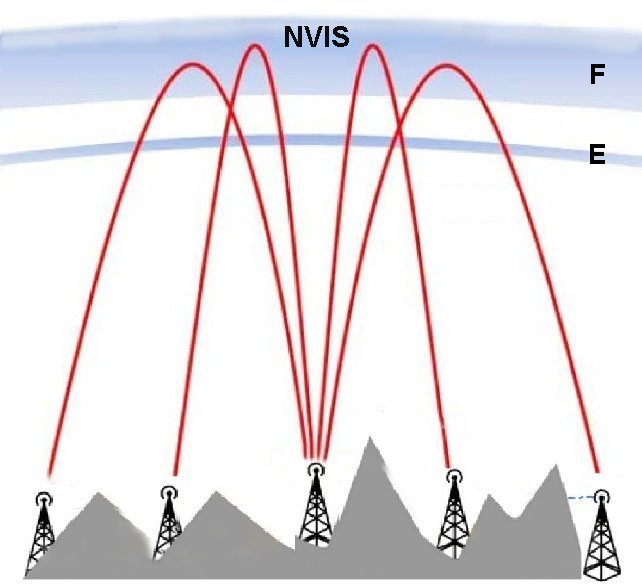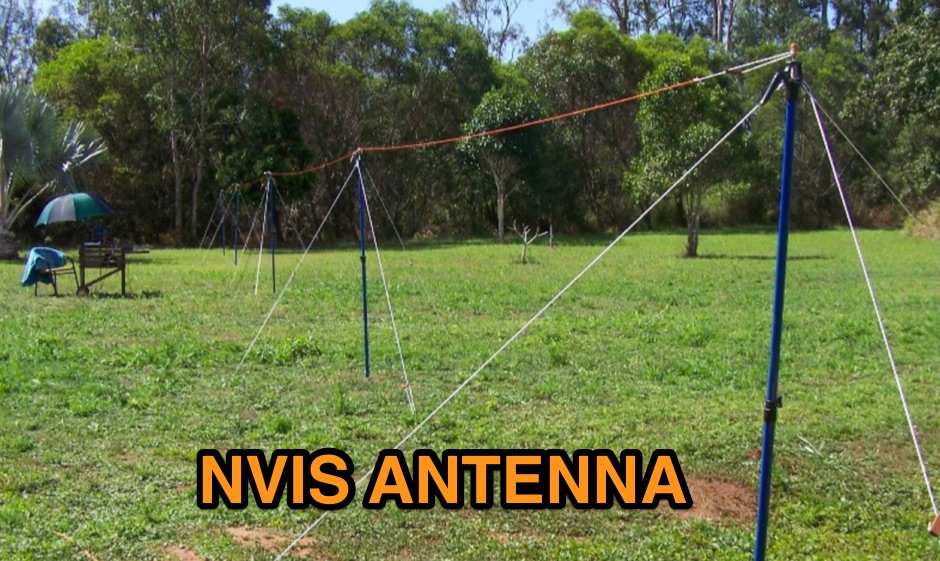Introduction: What Is NVIS?
Near Vertical Incidence Skywave (NVIS) is a specialized HF propagation method where signals are sent almost straight up and refracted back down by the ionosphere—ideal for reliable communication within a few hundred miles, filling the gap between VHF line-of-sight and long‑distance skip modes. Learn More
Why NVIS Matters for Bald Rock ARC
NVIS is perfect for Alabama’s varied terrain — hills, hollows, and pockets of sparse repeater coverage. During emergencies (like severe weather events), clubs and ARES teams can seamlessly pass traffic county‑to‑county without relying on repeaters or infrastructure .
Antennas & Frequency Selection
- Bands: 40 m during the day and 75/80 m at night hit the NVIS sweet spot (1.8–8 MHz range) More at wikipedia.com
- Dipoles: Use a horizontal dipole or inverted‑V mounted just 0.1–0.25λ above ground—approximately 10–15 ft on 40 m and 5–10 ft on 80 m. Join the conversation at reddit.com
- Reflector ground screen: Laying a grounded wire reflector below the dipole can increase performance by 3–6 dB. See results from ZL2AL's antenna tests.
- Alternative setups: Consider horizontal loops or modified military NVIS masts for better gain in field operations.Watch this YouTube video for more
Real-World Success & Tactical Advantages
NVIS has deep roots in military and emergency comms—used for jungle ops, hurricane relief, and by ARES groups during power and repeater outages. It has stealth benefits (harder to geolocate/jam) and works reliably at low power.
How to Test NVIS With Bald Rock ARC
- Plan a Mini-Test Day: Schedule a test focusing on NVIS—set up dipoles at 10', compare signal reports.
- Rotate Frequencies & Heights: Try 40 m at midday, 75 m at night; experiment with antenna height for optimum contact reports .
- Log & Review: Use tools like PSKReporter or QRZ to collect signal reports, then analyze coverage maps.
- Share & Report: Encourage other operators to test in their yards, tag #BaldRockARC on social media, and present findings at the next club meeting.
Visual Aids

Illustration of vertical vs angled radiation reflecting off the ionosphere (see image above)

Side view of a 40 m dipole at ~10 ft height
Conclusion
NVIS is a practical, resilient, and cost‑effective HF option for Bald Rock ARC, especially for emergency communications and local nets. A club “NVIS Day" is easy to organize, low-cost, and educational—perfect for hands-on learning and community readiness.
